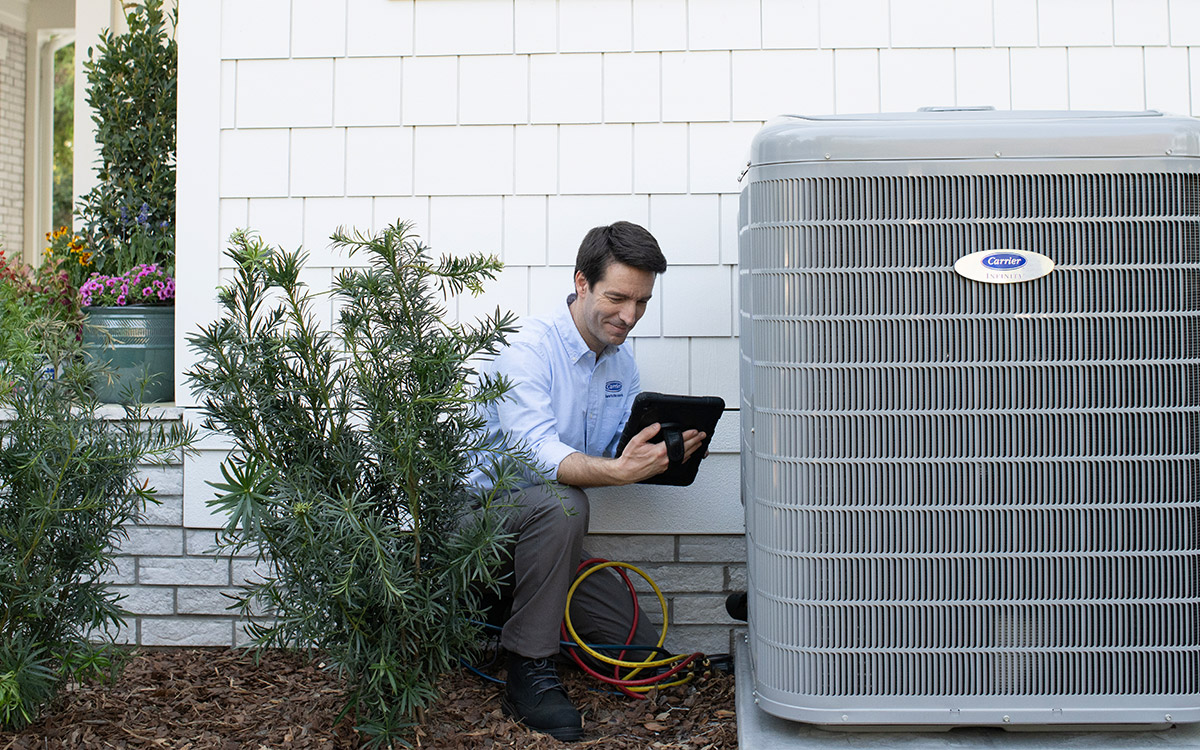
The world of air conditioning and refrigeration has changed dramatically in the last few decades, and a big part of that transformation has come down to what’s inside the systems: refrigerants.
These are the substances that actually absorb and release heat, making it possible to cool down spaces efficiently. Refrigerants are the heart of every HVAC unit, and over time, their chemical makeup has evolved to meet changing environmental and energy standards.
Carrier, one of the most recognized names in HVAC technology, has been leading this shift from traditional refrigerants like R-22 to next-generation solutions. As climate concerns have grown and regulations tightened, the evolution of Carrier Refrigerants reflects a broader push toward sustainability, efficiency, and performance.
1. What was R-22, and why was it so widely used?
R-22, also known as HCFC-22, was the industry standard refrigerant for decades. It was prized for its efficiency and reliability, making it the go-to option for residential and commercial air conditioning systems. Its chemical properties made it easy to work with, and it was compatible with a wide range of HVAC equipment.
From the 1950s through the early 2000s, R-22 was used in millions of air conditioners and refrigeration units worldwide. Its widespread use made it easily accessible and relatively low in cost. Contractors and HVAC professionals were very familiar with it, which added to its appeal.
However, while R-22 was convenient and effective, it came with a hidden environmental cost that would eventually change everything.
2. Why did the industry begin phasing out R-22?
The main problem with R-22 is that it is an HCFC, or hydrochlorofluorocarbon. These chemicals are harmful to the ozone layer, which protects Earth from ultraviolet radiation. The release of HCFCs into the atmosphere was directly linked to ozone depletion, prompting international action.
In 1987, the Montreal Protocol was signed, launching a global agreement to phase out substances that damage the ozone layer. R-22 quickly became a target of this policy. The United States Environmental Protection Agency followed suit, setting a gradual schedule for reducing and eventually banning R-22 production and import.
As a result, R-22 began disappearing from the market, and its price skyrocketed. Maintenance and repairs for systems using R-22 became more expensive. New systems had to use alternatives, forcing the industry to adapt rapidly.
3. What replaced R-22?
The most common replacement for R-22 was R-410A, a hydrofluorocarbon (HFC) refrigerant. R-410A does not deplete the ozone layer and offers better energy efficiency in newer systems. Its higher pressure and improved performance helped HVAC manufacturers deliver more reliable and cost-effective products.
Carrier Refrigerants were among the first to include R-410A in their product lines, reflecting the company’s ongoing commitment to innovation and environmental responsibility.
However, the transition to R-410A wasn’t without its challenges. Systems designed for R-22 could not simply be filled with R-410A. The pressure and material compatibility issues meant many older units needed to be completely replaced or extensively modified, creating upfront costs for homeowners and businesses.
The push for lower GWP: Introducing next-generation refrigerants
While R-410A solved the ozone problem, it introduced a new issue. It has a relatively high Global Warming Potential, or GWP. That means its release into the atmosphere still contributes to climate change. As global environmental policies continue to evolve, the HVAC industry has started to look for even better alternatives.
Next-generation Carrier Refrigerants are now focused on reducing GWP while maintaining or improving cooling performance. This includes refrigerants like R-454B, part of a new class of Hydrofluoroolefins (HFOs), as well as some natural refrigerants. R-454B offers a much lower GWP than R-410A and still delivers excellent efficiency.
Carrier has already begun incorporating R-454B into many of its residential and commercial products. These refrigerants meet international regulatory standards and support long-term climate goals, making them a future-proof choice for new installations.
1. How is Carrier leading the way in refrigerant innovation?
Carrier has played a critical role in the development and deployment of new refrigerant technologies. The company invests heavily in research and development to find solutions that balance performance with environmental impact. Carrier Refrigerants are designed to meet not only today’s regulations but also anticipated standards in the years ahead.
From residential air conditioners to large-scale commercial systems, Carrier is rolling out models that use R-454B and similar low-GWP options. Carrier is also focused on improving system design to ensure better energy efficiency, quieter operation, and easier maintenance.
By leading with innovation and sustainability, Carrier continues to shape the future of indoor climate control.
2. What does this mean for homeowners and businesses?
If you’re running an older HVAC system that still uses R-22, you may already be feeling the cost and availability pressures. Even R-410A systems are now facing future restrictions. Choosing the right refrigerant can have a direct impact on your utility bills, system lifespan, and maintenance needs.
Retrofitting or upgrading to a system that uses next-generation Carrier Refrigerants can be a smart long-term decision. Not only will it lower your environmental impact, but it can also improve system efficiency and reduce energy consumption.
It’s important to work with licensed HVAC professionals when replacing or upgrading your system. They can guide you through the best refrigerant options and ensure your equipment meets local codes and standards.
3. What’s next in the future of refrigerants?
Looking ahead, the refrigerant industry will continue to evolve as technology improves and climate regulations tighten. Future refrigerants will likely focus on ultra-low GWP, non-flammable, and energy-efficient formulations.
Carrier is already working on the next wave of innovation, including better system controls, smart diagnostics, and climate-friendly refrigerants. The company’s vision includes full-scale adoption of sustainable practices while continuing to deliver top-tier performance.
As governments push for net-zero targets and environmental accountability, refrigerant choices will play a larger role in how buildings manage their carbon footprint.
Frequently Asked Questions
Below are some commonly asked questions to consider:
What happens if I keep using a system with R-22?
While it’s still legal to operate existing R-22 systems, servicing them is costly due to the limited supply. Over time, it may become impossible to repair them affordably.
Can I retrofit my R-22 system to use a new refrigerant?
Some systems can be retrofitted, but not all. It depends on your unit’s age, design, and condition. A licensed HVAC technician can assess and recommend the best path forward.
How do I know if my system uses R-410A or a newer refrigerant like R-454B?
This information is usually found on your unit’s nameplate or manufacturer label. You can also contact the manufacturer or an HVAC professional for confirmation.
Carrier refrigerants are shaping the future of HVAC
The shift from R-22 to today’s advanced solutions has been nothing short of revolutionary. Refrigerants by Carrier stand at the forefront of this movement, offering options that not only comply with global standards but also support cleaner, more efficient cooling systems. Whether you’re a homeowner looking to save on energy or a business owner aiming to upgrade aging infrastructure, understanding the evolution of refrigerants is key to making the right decision.
Get in touch with an HVAC installation company today to explore eco-friendly refrigerant options.


